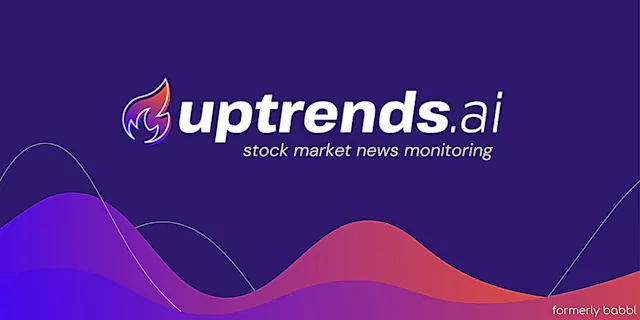20 Free Ideas For Picking Ai For Stock Trading Websites
20 Free Ideas For Picking Ai For Stock Trading Websites
Blog Article
Top 10 Tips For Assessing The Price And Costs Of Ai Trading Platforms For Stock
To get the most out of your investment, it's important to know and compare pricing for AI software that predicts and analyzes stocks. Prices can be very different which is why it's essential to be aware of what you're getting value for your money. Here are 10 strategies to help you assess the price and value of these platforms.
1. Know Pricing Model
Subscription-based : Determine whether there's a monthly or an annual charge and the features included in each level.
Pay-per-use: Determine whether you are charged based on the usage of the platform (e.g. number of transactions or data requests).
Freemium model - Find out whether there's a free version with limited features, and a premium version that includes the premium features.
2. Compare Pricing Tiers
Features breakdown: Check out the features included in each pricing the tier (e.g., basic, professional, or enterprise).
Scalability: Make sure that the pricing tiers align with your needs, whether you're an individual trader, a professional, or an institutional member.
Upgrade flexibility: Find out whether you can easily upgrade or downgrade when your requirements alter.
3. Evaluate Hidden Costs
Data fees: Check whether the platform is charging extra for access to premium data (e.g., real-time data or advanced analytics).
Brokerage charges - Check to find out if additional charges are imposed by the platform to execution of trades, or for integration with brokers.
API usage: Assess if API access costs are higher or if API usage is very frequent.
4. Assess Free Trials and Demos
Trial period. Find platforms that offer the option of a demo or trial to let you try their capabilities before you commit.
Check the limitations of a free trial. Does it offer all features?
No-commitment option: Make sure you're able to end your trial if it doesn't suit your needs.
5. Be sure to check for discounts and promotions.
Discounts for annual plans: Check whether there are any specials provided by the platform in comparison to their monthly plans.
Referral programs - Find out whether there are any discounts or credits that you can use to refer new users.
Pricing for institutions In the event that you are part of a company that is larger, ask about bulk or institution pricing.
6. How to Evaluate Return on investment (ROI).
Cost vs. value: Consider whether the capabilities and features of the platform are worth the price. Will it make your life easier or assist you in making better decisions in trading?
Performance track record - Check the platform's performance rates or user testimonials to get an idea of its potential ROI.
Alternative costs: Comparing the platform's price to the cost that could be incurred if the platform isn't used (e.g. missed opportunities, manual data analysis time).
Review Cancellation & Refund Policies
You are able to end your subscription at any time, without paying any fees or penalties.
Check the policy on refunds to see whether you are eligible for a refund for any unredeemed subscription portion.
Auto-renewal Check to find out whether your subscription renews automatically and find out how you can opt out.
8. Transparency in Pricing:
Price page that is clearly written Make sure that your platform provides a thorough and up-to-date pricing page without hidden costs.
Customer Support For clarification of unclear pricing information and other charges, call customer support.
Contract terms: Make sure you understand the service terms and any penalty.
9. Compare with Competitors
Comparing features and prices of different platforms is an excellent method to ensure you're getting a good deal.
User reviews: Look at the feedback of users to determine whether the cost of the platform is a good value.
Positioning in the market: Find out if your platform is positioned as a low-cost, mid-tier or premium choice. Additionally, determine if the cost is comparable to your expectations.
10. Estimate the Long-Term cost
Price increases: Take a look at the past history of the platform and observe how often it increases prices.
Feature additions: Assess if new features are included in your current plan, or need an upgrade.
Cost of scaling The platform needs to be priced reasonably in the event that your trading or data requirements rise.
Bonus Tips
Free trials of various platforms are available to try and compare the advantages and performance of various platforms.
Negotiate the price: If are frequent users or part of a large institution You can inquire about discounts or special pricing.
Find free educational tools and sources. Some platforms offer tools for education or resources for free.
The following tips can assist you in evaluating the prices and expenses of AI analysis and stock prediction platforms. You can choose one that suits your budget while delivering the features you require. A platform that is priced right should strike a equilibrium between affordability, functional and performance to maximize the value of your trading. Check out the recommended continue reading this for stock ai for blog advice including ai stock picker, ai stock, ai trader, trading ai, chart ai for trading, ai stock market, stock market software, ai stock trading, copyright ai trading bot, best stock analysis app and more.
Top 10 Tips For Evaluating The Scalability Of Ai Platform For Analyzing And Predicting Trading Stocks
Assessing the scalability of AI-driven trading and stock prediction platforms is crucial for ensuring they can cope with increasing data volumes, user demands as well as market complexities. Here are top 10 tips on how to assess scalability.
1. Evaluate Data Handling Capacity
Find out if your platform is able to analyze and process large amounts of data.
Why? Scalable platforms should be able handle growing amounts of data with no loss.
2. Check out real-time processing capabilities
Find out how the platform handles live data streams, such as price movements and breaking news.
What is the reason? Analyzing in real-time is crucial to make trading decisions. delays could result in missing opportunities.
3. Cloud Infrastructure and Elasticity
Tip: Check if your cloud platform (e.g. AWS, Google Cloud or Azure) and has the ability to scale resources dynamically.
Why is that the cloud platform's elasticity allows the system's size to adapt based on usage.
4. Algorithm Efficiency
Tip: Evaluate the efficiency of computation in AI models (e.g., deep learning or reinforcement learning) used for predictions.
The reason: Complex algorithms are resource-intensive Therefore, optimizing these algorithms is crucial for scalability.
5. Learn about Parallel Processing and Distributed Computer Systems.
Make sure the platform is using parallel computing or distributed computing frameworks.
The reason is that these technologies accelerate data processing across multiple nodes.
Review API Integration.
Test the integration capabilities of the platform with APIs that are external to the platform.
Why? Because the platform can adapt to the changing requirements of data sources and trading environments thanks to seamless integration.
7. Analyze User Load Handling
Tip: Simulate the impact of high user traffic to see how the platform does under high load.
Why: A scalable platform will provide performance even when the amount of users increase.
8. Evaluation of Model Retraining and adaptability
Tip - Assess how often the AI model is retrained and with what degree of efficiency.
Since markets always change, it is important to ensure that models are up-to-date.
9. Verify fault tolerance and redundancy
Tips: Make sure the platform is equipped with failover mechanisms and redundancy to handle hardware or software failures.
The reason trading can be costly Therefore scaling and fault tolerance are vital.
10. Monitor Cost Efficiency
Review the costs associated with your platform, including the cloud resources, storage and computing power.
Why? Scalability should come at a cost that is sustainable. This means that you must balance efficiency against cost.
Bonus tip Future-proofing
Make sure the platform can adjust to changes in regulations and incorporates emerging technologies like quantum computing or advanced NLP.
Concentrating on these aspects will help you evaluate the capacity of AI software for stock prediction and trading and make sure they are durable, efficient and prepared for expansion in the future. Check out the most popular ai stock trading app for site info including best ai etf, ai stock trading bot free, ai trade, getstocks ai, ai investment platform, ai stock trading app, ai trading bot, copyright ai trading bot, best ai for trading, ai investment app and more.